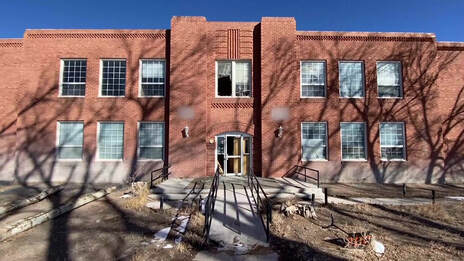
One of the best sounds school-aged kids hear is when the last bell in the last class rings signaling the school is out for summer. In the words of Alice Cooper, “Out for summer. Out til’ fall. We might not get back at all.”
Today I would like to visit one such school. Where school was let out for summer and never returned. The once busy school halls and classrooms are deserted and desolate. At one time these halls were filled with laughter, the playground filled with joy, and the gymnasium roared with cheers. 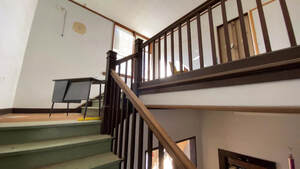
School closures are something we are all too familiar with in the United States. Mostly impacting older buildings, urban areas, and low-income regions. For example, the capital of the rust belt; Detroit, with its rising crime, diminished population, reduced manufacturing jobs, and decay is an ideal environment for school closures. Over the past decade, more than 30 schools have permanently closed their doors in Detroit alone.
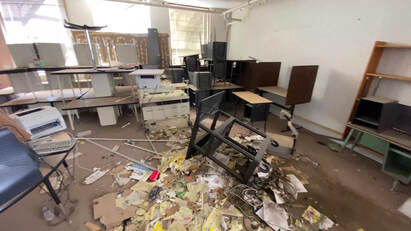
Other cities such as Chicago, Philadelphia, and New York have shut hundreds of public schools. But, this is not isolated to a few areas, every place in the country sees schools merge, consolidate, or close entirely. Regardless of the city size, make-up, or region the decision to close a school is never taken lightly. The school systems are trying to work through an ever-shrinking pool of funding and lack of political support. Causing a cycle of closures and community mistrust that further deepens the political gap.
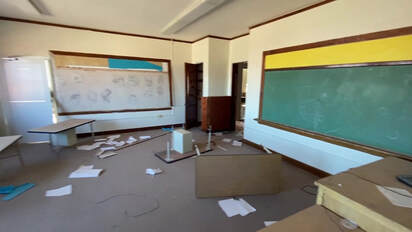
There are many factors that contribute to school closures and to be clear schools are not closed without a suitable replacement being available. One of the most common reasons a school closes is due to maintenance costs. For example, schools took on millions of dollars of renovation costs, when we were ensuring no asbestos or led-based paint was used in new or existing construction. In some instances, it was more cost-effective to close the school and build a brand new and more efficient building. In that instance, the structure simply outlived its usefulness and had become a health concern. Sometimes they close because the demand for education far exceeds what the current structure can accommodate. In the case of private schools, it is nearly always a funding issue. Other times schools close due to shrinking enrollment and dwindling population. In this instance, the remaining school-aged children are bused to a large regional school. Which is the case of the school we are having a look at today.
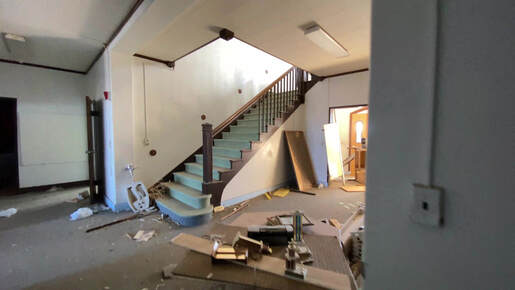
However, an American school is much more than a slab of brick-and-mortar that kids attend during the day to learn; for most families, they act as community centers and gathering places. When a school is closed; especially in a small town, people often feel a sense of upheaval and grief. Not to mention a feeling of uncertainty that arises towards their local governments' commitment to equitable education. In 2014 four independent education organizations in New Jersey, Illinois, and Louisiana filed a complaint. In which they asked the US Justice Department and Department of Education to investigate discriminatory practices through the school closings. The resulting investigation concluded that it was a matter of low tax income and overall school funding. Meaning; low-income areas were impacted the most by the school closures; due to lack of funding, not the ethnicity of the local population. Regardless, of the investigation's findings and whether it was intentional; it leaves our minority community without the education centers and gathering places that are afforded to more affluent communities. The fraught debate continues, but at the end of the day, many of the pain points that communities are going through would be solved by increasing public school funding.
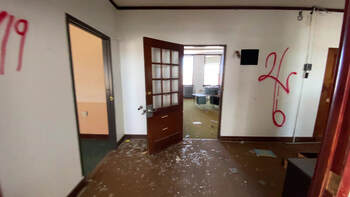
Setting the economic struggles of the school system aside: Artists, poets, and filmmakers have long realized the emotive power of this struggle and its abandoned institutions. The closures are set against the backdrop of numerous shuttered schools and derelict playgrounds. Ushering in a new era of urban explorers and documentarians. Carrying a tradition that dates back to the 18th-century, when French painter; Hubert Des Ruin painted derelict structures. Later in the 20th-century, conceptualist painters recognized that abandoned buildings can show us complex social issues. A little later the husband and wife team Hilla and Bernd Becher became well known for their depiction of abandoned industrial era facilities across Europe and North America.
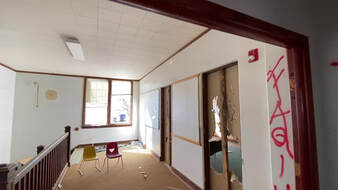
Another example of this includes a 1974 project by Gordon Matta-Clark that famously photographed an ordinary structure in the suburbs of New Jersey that was awaiting demolition. Later Nicolai Ouroussoff; a New York Times architecture critic, said about the photos, they gave him a “growing sense that the American dream was evaporating”. A few months later, the home was demolished. Now a growing group of contemporary artists is expanding on the concept that abandoned schools can be more evocative than a derelict factory or homes that are slated for demolition. An abandoned school and its remnants are more personal, poignant, and relatable. They represent a collective childhood experience as much as they represent a deeply private experience.
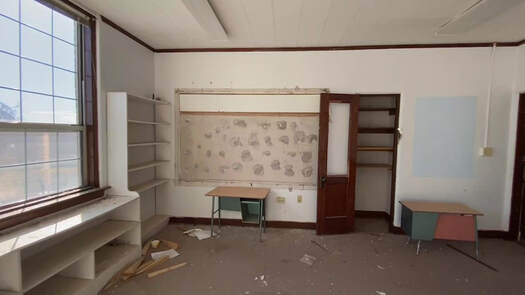
Typically, there are two approaches in this field of art. For one, there are artists who document the sorrow and frustration felt by the students, teachers, and community (commonly referred to as urban explorers or Urbex). Next there are the artists who practice a form of art called “social practice”. They tackle policy issues and ask direct questions related to the waste of abandoned structures. While urging residents to reimagine abandoned schools and openly engage with city leaders.
Regardless of the approach, there are many possibilities for abandoned art as a catalyst for social change. A drastic example of this is a demonstration staged by Ai WeiWei, arguably the world’s most famous activist. He used over 9,000 backpacks to spell out the sentence “She lived happily in this world for seven years” on the side of a Munich museum, criticizing the Chinese government after thousands of students died when their shoddy classrooms collapsed during a 2008 earthquake. Piles of dead children's backpacks were found at the sites of the demolished schools. Today Ai’s exposure of China's shoddy construction practices is credited for the policy changes that the Chinese government eventually made. This new commitment to a safe schoolhouse left many Chinese areas with abandoned schools. While the changes we see in the US are much less drastic; the heart of the matter and goal is the same, to ensure a safe and productive school environment. 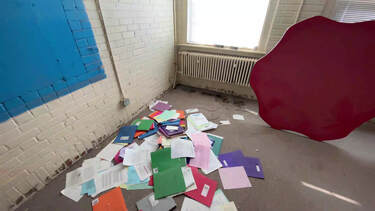
Back in the states, we have much more stable school buildings; however, distance is becoming a problem. For example; in Chicago, evidence shows that closures have forced children to cross through gang territory to get to their newly relocated schools. In 2013 the Chicago Teachers Union president; Karen Lewis questioned whether the additional security costs outweighed the estimated $1 billion the district saved in closing 49 schools. A cost that is significant when you consider private security forces, as well as the Chicago Police department, now protect the children's commute to school. Again, this problem boils down to a lack of funding to the school system, but in this case, it comes with an increased security burden. A burden that added costs to the school system in a manner that does not provide educational resources or support, just basic safety.
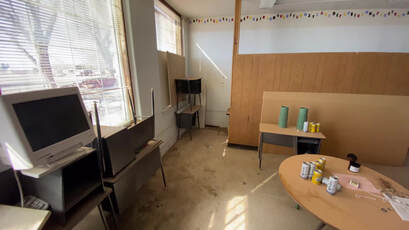
A few years ago, a Baltimore based advocacy group called the Teachers’ Democracy Project posed a simple question about school closures: “Why would we close any small, safe, and relatively successful school, particularly if it is located in a low-income, Black neighborhood and serves as a vital anchor-institutions?”. The hard truth is the closures have to do with fiscal circumstances and lack of public support. Politicians, educators, and reformers all have competing views and approaches to “solving” the problem. There is no direct evidence that closing makes it difficult for educators, but there's a plethora of evidence related to the impact on our children. For example; students living in low-income regions are five times more likely to drop out than those from wealthy and middle-class areas. And identifying at-risk students is best done with small class sizes and an ongoing relationship with the teachers and students. Both of these things are prevented from happening when we close a school and overcrowd another school (to take on the new student base). Because the closings are more often in economically struggling communities, the students could; over a period of time, perpetuate the high dropout and imprisonment rates that plague their communities.
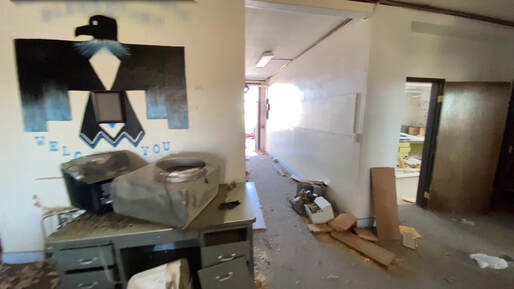
There is a simple solution to all of this. One that we have turned a blind eye to for too long. We must fund our schools more and fill them with motivated and well-compensated educators. For the richest country in the world to act like we can’t manage this simple task is laughable. The pentagon alone spends $746 billion a year. That’s over $62 billion a month and over $2-million a day. If we were to shave one-tenth of this funding and give it to education we would have 746 million dollars. This is enough money to fund every public school, stock them with new supplies, and adequately compensate our educators. We could even fund our community colleges in a manner that makes them free and public institutions. While the pentagon's funding is a drastic example, it demonstrates that it is a lack of prioritizing our education and children. It’s not that we do not have the funds and resources to improve our schools. It’s a lack of desire and political support. The lack of appreciation for public education will only leave us with a wider economic gap, overcrowded schools, and a poorly educated population. Sadly, the saying “you get what you pay for” applies all too well to this situation.
Soundtrack By: Ⓢ | Ⓡ | Ⓖ
0 Comments
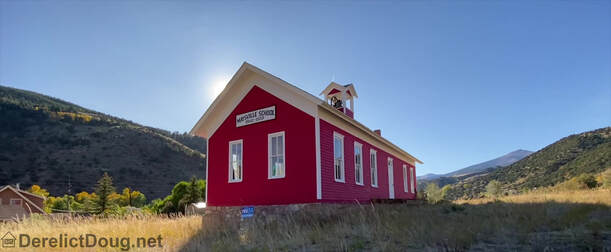
lorado has many one-room and small schoolhouses. While these are no longer used the structures provide a fascinating glimpse into the past. Giving us insights into the lives of the American Pioneers. Many of the ranching and mining communities I cover had schools that no longer exist or were turned into private residences. Little records exist besides the oral traditions and the fact that these buildings were once the hub of many children's lives.
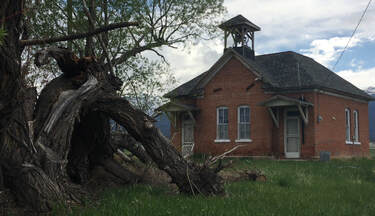
Today I would like to focus on two such examples; however, there are countless other schoolhouses that dot the landscape. But before I dive into the specific locations, I would like to give a little more context into the region of Colorado that they rest in. The area in modern times is Called “Chaffee County”; however, Chaffee was only created when Lake County was divided into multiple jurisdictions. The original Lake county was designated in the area long before Colorado received its statehood. The Lake County Territory stretched from the headwaters of the Arkansas River to the Utah state line. This is significant because many of the schoolhouses were built in the 1860s, this would be about 16 years before Colorado was a state. Just 12 years before this land was a part of Mexico and at the time the schools were built it was primarily inhabited by Native Americans. These are some of the earliest structures built by Westerners and illustrates that pioneers had an emphasis on education.
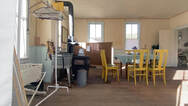
These schools often were tiny and uncomfortable log cabins or one-room schoolhouses. They were heated by wood or coal stoves. They had little insulation and tended to be drafty in winter. Most of the original wooden schools burnt and were replaced by brick or stone buildings
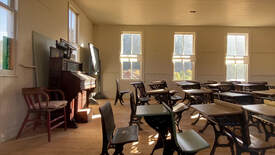
The teacher was often only one year removed from school. Literally having been a part of the class just one year before. The maintenance of the building all rested on the Teacher. They served as the principal, janitor, lunch lady, and everything in between. The “three R’s”, readin’, ritin’, and rithmetic were the primary focus of the lessons. They had daily oral recitations done in stages (or grades). Spelling bees, math matches, and other games were later introduced to make learning more fun. Many of the students did not go further than 4th grade. However; many pupils desired to learn enough to self teach and become successful members of society.
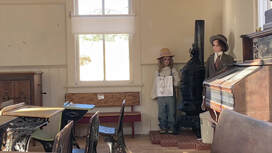
Gas Creek School
This charming little red brick schoolhouse was built in 1890 and officially formed the “Gas Creek School District”. It was built on land that was donated by the Fehling family on condition that if it was not used as a school within two years, ownership would revert back to the family. However, it operated as the sole school in the district for 49 years. The double entranceway was added in 1909 and was used to segregate boys and girls. The two out-houses in the back of the school were installed by the Work Progress Administration (WPA) project in 1930. The school held classes in the building up until 1942. 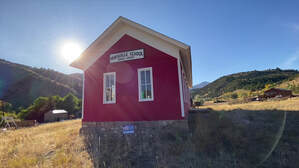
The interior has been modified into a residence. The exterior of the building has changed little and is an iconic example of early 20th-century rural schools. The schoolhouse eventually made its way back to the Fehling family by 1958 and was sold a few more times. During this period it fell into disrepair. Fortunately, In 2019 it was added to the National Register of Historic Places. This was made possible by a grant from the Colorado State Historical Fund. While we have not seen any restoration, I am anxiously waiting to see what this historical gem looks like after a little polishing!
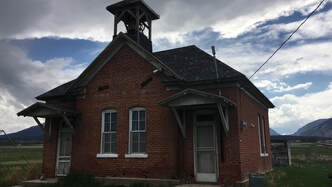
Maysville School
About 40 miles south of the Gas Creek District is the site of the former Maysville School district. Maysville began with the name of “Crazy Camp.” Why it was named that is not known, but it was changed to Maryville. It was named after a local pioneer “Mary”. However; over the years it was shortened to “Maysville”. And kept this version of the name to this day. Personally, I kind of prefer “Crazy Camp”, but I can see why they may have wanted to change it. Maysville went on to become one of the richest districts in the area. 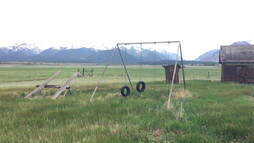
Maysville School began in 1870, six years before Colorado became a part of the United States. The bell that beckoned students was originally hung in the Union Sunday School and Congregational Church building. At some point, those buildings were moved to Salida. At that time the bell was hung in the school tower, where it sits to this day.
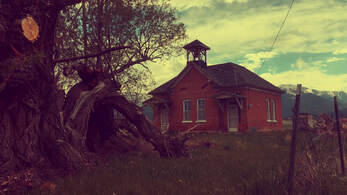
Maysville was known for offering its teachers slightly better salaries. That said they were given about $6.25 monthly. When you consider that the average laborer was paid $8-9 a month, this was still a low salary. The Maysville teachers had the added benefit of on-site living quarters. Because of this, water was piped into the school building. Which made it one of the few country schools without a well, water bucket, and dipper. However; these amenities were not enough to keep most teachers for more than a year. In-fact only two teachers returned to teach for a second year.
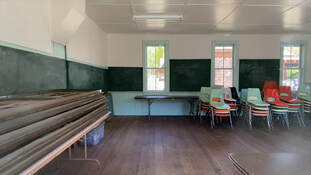
The Maysville school held classes until 1958 when most of the regional schools were closed and consolidated into two large school districts (Salida and Buena Vista). At that time the Maysville school became a bus barn to house the bus used to take students to school in Salida. In 1977 the school was donated to the Sakida Historical Society (SHS). At the time there was some controversy. Some felt the school district should not be giving away this property without having an idea of what it is worth. Glen Everett from the SHS was quoted as saying that he felt “the building was worth more for its historical value than what the district could get for it on sale”. It has since been beautifully restored to its original state. It is now used as a museum for the area.
Learn when you can, visit the Salida Museum Here: http://bit.ly/SalidaMuseum |
AuthorThank you for visiting! This is a collection of media from the lost and abandoned corners of the world. Please have a look around, I hope you enjoy. Archives
April 2022
Categories
All
|
Libraries |
Support |
|


